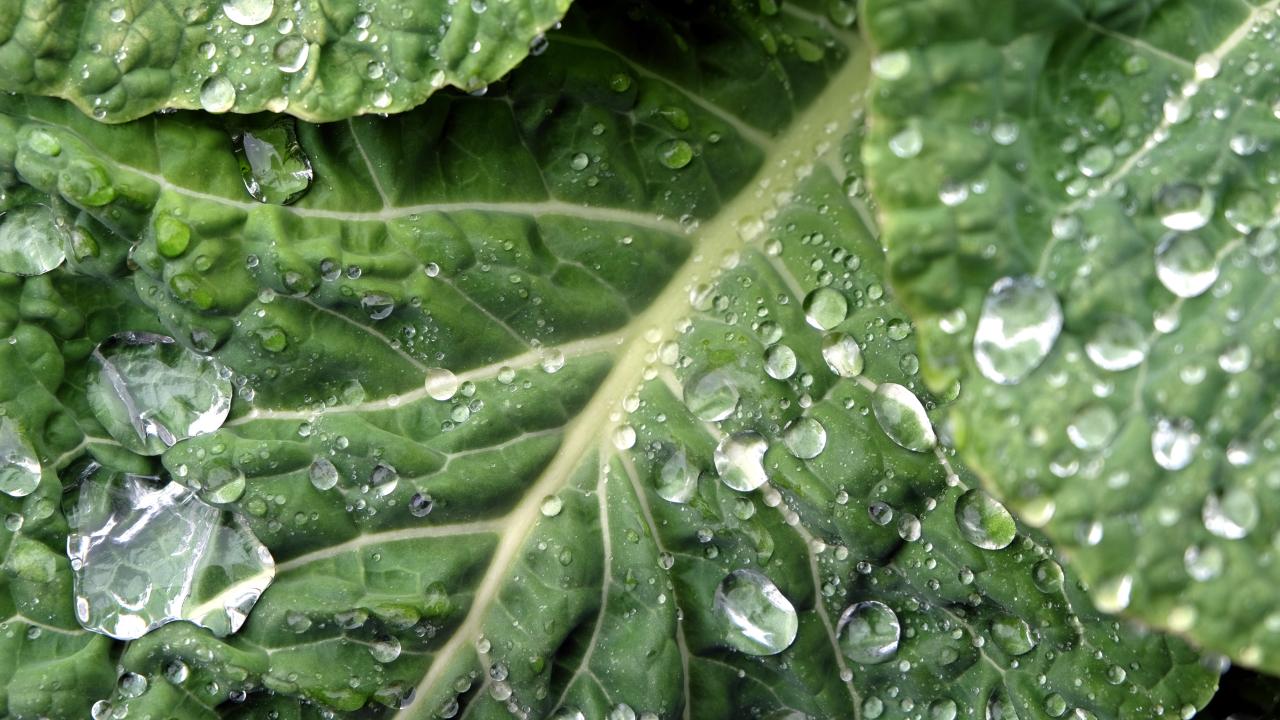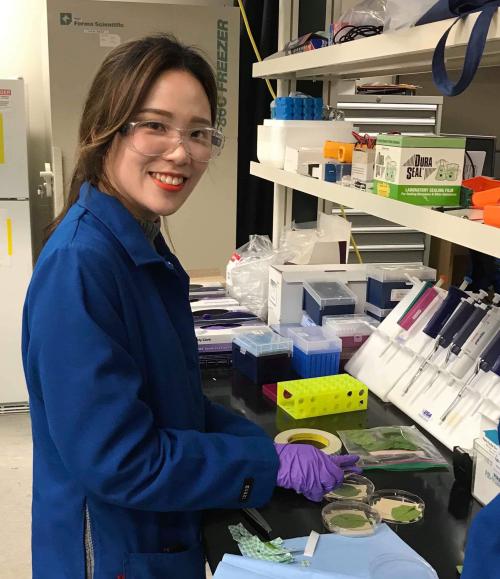
Cleaning Leafy Greens is Getting Easier Thanks to Research at UC Davis
It starts with the crunchy, crisp bites found only in the fresh leaves of iceberg lettuce. As employees in the local cafe clock in late after missing their alarm, they start their shift first counting the money in the till. That is, until their coworker comes bustling out the back doors, imploring them for help with food preparation. Together, they begin cutting and pealing and prepping as much produce as possible for the busy workday full of countless customers—unwittingly neglecting one of the necessary steps in food preparation.
As is frequently mentioned in food safety training, washing produce is necessary for preventing detrimental outbreaks of food-borne diseases. Bacteria and other harmful microbes live practically everywhere and nearly all of them are not visible to the naked eye. However, their impact can be more than just damaging—it can be deadly.

According to the Centers for Disease Control, the number one cause of food-borne related illnesses within the United States is caused by bacteria via cross-contamination. Approximately 48 million cases of foodborne illness occur annually, affecting 1 in 6 Americans each year. Current conventional washing and sanitizing approaches focus on using chlorine to remove and kill harmful bacteria from most produce. However, when used on leafy greens like spinach or kale, these approaches can be limited by the surface topography of a leaf.
Researchers at UC Davis, like Biological and Agricultural Engineering postdoctoral scholar Jiyoon Yi, are looking to change that.
“We wanted to understand what barriers make it difficult for the chlorine to inactivate the bacteria,” said Yi. “We knew that chlorine clearly worked well with smooth surfaces, but this effectiveness changed depending on the surface of leaves.”
The Peaks and Valleys of a Leaf
A leaf is more than just a flat surface. There are high peaks and low valleys where microorganisms can situate themselves, making it difficult to remove and kill them.
Yi’s study showed that the ability to kill microbes was significantly reduced when those microbes were found in crevices in the leaf surface. However, she wanted to know more about how microbes were evading inactivation and how current sanitization practices could be improved to remove and kill them.
With help from UC Davis Plant Pathology Professor Johan Leveau, Yi made replicas of leaf surfaces to characterize their hills and valleys and use them into three-dimensional models. Yi and her advisor, Biological and Agricultural Engineering Professor Nitin Nitin, used this 3D model to see what sorts of chemical reactions were happening and how sanitizers were distributed across the surface.
This told Yi what obstacles were obstructing current washing and sanitizing approaches and revealed a potential pathway to solving the problem.
New Approaches to Sanitization
With these results, Yi began developing a novel sanitizer made from chlorine bound together with yeast microcarriers. These microcarriers can transport large amounts of chlorine to those hard-to-reach peaks and valleys on the leaf’s surface, making bacterial inactivation more efficient.
Results and solutions like these lay the framework for more studies to understand sanitation and food safety concerns while solving them as well.
“Understanding how the microbes function allows us to develop new sanitation methods,” she said. “This reduces the chance of a major outbreak and at the end of the day improves the overall safety of the fresh produce industry.”
After completing her postdoc at UC Davis, Yi plans to continue her work as an assistant professor with the Department of Biosystems and Agricultural Engineering at Michigan State University starting in winter 2023. She aims to continue using data systems for food safety while also expanding current detection methods of microbes using image-based deep learning models to solve some of the most complex food safety challenges of today.
